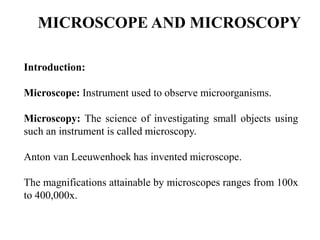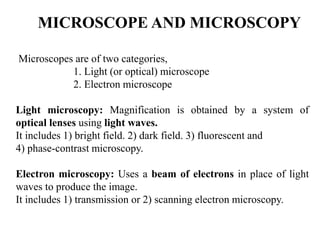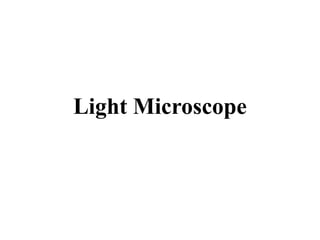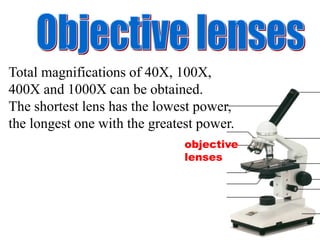Microscopes and microscopy are introduced. There are two main types of microscopes - light microscopes, which use optical lenses and light, and electron microscopes, which use a beam of electrons. Light microscopes can use different techniques like brightfield, darkfield, fluorescence, and phase contrast. Electron microscopes have higher resolving power and include transmission electron microscopes and scanning electron microscopes. Sample preparation and staining are important for microscopy as they allow small and transparent specimens to be visualized.






































